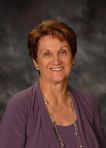Jo Ann A. Mathews's Blog, page 4
July 10, 2024
Women and Adversity: Mary Anderson, Inventor of the Windshield Wiper


Mary Anderson, Inventor, The Windshield Wiper
Women and Adversity:Mary Anderson
Inventor –Windshield Wiper
Here is another story about a woman who was deprived of recognition for her invention because no company believed it was relevant. The windshield wiper!
It is said that in 1902 Mary Elizabeth Anderson was in a streetcar on a snowy day in New York. She noticed the conductor would use his hand to remove the snow from the window. He would get himself full of snow as well.
Anderson sketched a design for a wiper blade that could be activated from inside the vehicle. She filed a patent for her design on June 18,1903, and on November 10 was awarded a patent for “Window Cleaning Device.” Companies didn’t believe it was useful. After all, few people owned cars at the turn of the century, and Henry Ford didn’t sell the Model T until 1908. Anderson’s patent expired in 1920. In 1922 Cadillac built cars with windshield wipers as a standard feature.
Bio:
1866 – Born February 19 on Burton Hill Plantation in Greene County, Alabama
1870 – Her father passed away but the family had enough money to stay on the plantation
1889 – She and her mother Rebecca, her sister Fannie moved to Birmingham and built the
Fairmont Apartments
1893 – Went to Fresno, California to operate a cattle ranch and vineyard
1900 – Returned to Birmingham to help care for her ill aunt
2011 – Inducted into the National Inventors Hall of Fame
Anderson died at the family’s summer home in Monteagle, Tennessee June 27, 1953 at the age of 87.
There is no record of her schooling, a husband or children.
More Information:
www.youtube.com/watch?v=1IFhwWxL99M
https://www.thoughtco.com/mary-anderson-inventor-of-the-windshield-wiper-1992654
www.foxnews.com/lifestyle/meet-american-invented-windshield-wipers-mary-anderson-alabama-entrepreneur
My ebooks available at amazon.com and barnesandnoble.com:
Honoring 23 Black Women, Recognizing 23 Notable Mothers, Saluting 23 Faithful Suffragists
The post Women and Adversity: Mary Anderson, Inventor of the Windshield Wiper appeared first on Jo Ann Mathews.
June 26, 2024
Women and Adversity: Lorraine Hansberry, Lesbian Playwright, Civil Rights Activist


Lorraine Hansberry speaking to an audience
Women and Adversity:Lorraine Hansberry, Lesbian
Playwright
Civil Rights Activist
My second post for Pride Month is another Chicagoan, playwright and civil rights activist Lorraine Hansberry. Her most popular play is 1959’s A Raisin in the Sun, about racial discrimination against African Americans in Chicago. She garnered several firsts with the play:
First Black woman to have a Broadway show producedFirst Black playwright to receive the New York Drama Critics’ Circle Award for Best American PlayYoungest American to receive the New York Drama Critics’ Circle Award for Best American PlayFirst Black American to win the Drama Desk AwardHansberry spoke out about racial discrimination and associated with Malcolm X, Langston Hughes, W.E.B. Du Bois and others. In 1953 she married writer-activist Robert Nemiroff, who was Jewish. The couple separated in 1957 and divorced in 1962, although they remained friends. After she moved to Waverly Place in Manhattan, she began a relationship with Dorothy Secules, a white woman who lived in the building. Hansberry didn’t officially declare she was a lesbian, but she was known to have had several relationships, although she remained with Secules to her death. In 2014 her estate revealed diaries in which she revealed she was a lesbian.
Bio:
1930 – Born May 19 in Chicago, the youngest of four children. Her father was a real estate broker, and her
mother was a teacher.
1938 – Her family moved to a white neighborhood. Neighbors protested, some violently.
1940 – The Supreme Court ruled the Hansberry family could stay in the white neighborhood
1948-50 – Attended University of Wisconsin in Madison
1950-53 – Moved to New York and was a writer and editor for the Black newspaper Freedom
1953-56 – Waitress and cashier and spent time writing
1957 – Contributed letters as L.H. to The Ladder about feminism and homophobia, exposing her lesbianism
1960 – Bought a building on Waverly Place in Manhattan with the proceeds from A Raisin in the Sun
1963 – Active in the civil rights movement
Hansberry died of pancreatic cancer January 12, 1965 at the age of 34.
More Information:
www.gordonparksfoundation.org/education/features/a-raisin-in-the-sun
makinggayhistory.org/podcast/lorraine-hansberry
www.chipublib.org/lorraine-hansberry-biography
My ebooks available at amazon.com and barnesandnoble.com:
Honoring 23 Black Women, Recognizing 23 Notable Mothers, Saluting 23 Faithful Suffragists
The post Women and Adversity: Lorraine Hansberry, Lesbian Playwright, Civil Rights Activist appeared first on Jo Ann Mathews.
June 12, 2024
Women and Adversity: Jane Addams, Lesbian Co-founder of Hull House in Chicago

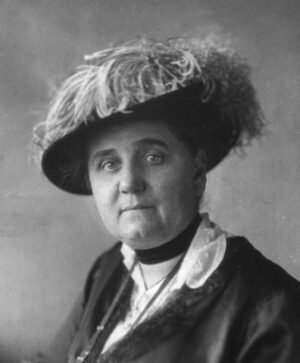
Jane Addams Co-founder of Hull House, Lesbian (Bain News Service, Publisher)
Women and Adversity:Jane Addams, Lesbian
Co-founder of Hull House
To recognize June as Pride Month, I’m featuring famous women who were lesbians.
I wrote a post about Jane Addams on this blog in 2018, but I hadn’t read anything about her being a lesbian.
Growing up in the Chicago area, I knew she founded Chicago’s Hull House, the first social settlement house in North America. It provided needed services for the community, including a nursery, a community kitchen and a place where working single women could live.
Addams is known to have had a special relationship with classmate Ellen Gates Starr, who helped her co-found Hull House. Her decades-long relationship with Mary Rozet Smith was widely known. They shared the same room and bed when they traveled together and owned property together. Addams was inducted into the Chicago Gay and Lesbian Hall of Fame in 2008.
Addams achieved multiple accomplishments. She was a social reformer, activist, suffragist, and author, having written a dozen books. Her most noteworthy achievement is receiving the Nobel Peace Prize in 1931, the first American woman to receive this award.
Addams was born Laura Jane Addams September 6, 1860 in Cedarville, Illinois, the youngest of eight. She was two years old when her mother died while pregnant. Her family was wealthy, and her father was a founding member of the Illinois Republican Party and was a friend of Abraham Lincoln. Addams liked to look at the letter her father kept in his desk from Lincoln.
Some noteworthy dates:
1864 – contracted Potts disease, tuberculosis of the spine, and developed a limp and life-long health issues
1881 – was valedictorian of her class when she graduated from Rockford Female Seminary, Rockford, Illinois. Went on to study medicine at Women’s Medical College of Pennsylvania
1882 – granted a bachelor’s degree when the Seminary became Rockford College for Women
1883 – became ill, dropped out of medical school and traveled to Europe
1887 – returned from Europe and suffered from depression
1887-1888 – returned to Europe and visited Toynbee Hall in London, the settlement house that inspired Addams to found Hull House
1889 – co-founded Hull House with Ellen Gates Starr
1910 – wrote her memoir, Twenty Years at Hull House
1911 – established National Federation of Settlements
1919-1929 – president of Women’s International League for Peace and Freedom
1931 – awarded the Nobel Peace Prize
Smith died from pneumonia February 22, 1934. Addams had fragile health most of her life, but her health declined further after her heart attack in 1926. She died May 21, 1935.
More Information:
https://www.youtube.com/watch?v=PWiHtUymEhw
https://www.youtube.com/watch?v=RfsObwDPJO8
https://www.youtube.com/watch?v=76Vv441e4nk
My ebooks are available at amazon.com and barnesandnoble.com:
Honoring 23 Black Women, Recognizing 23 Notable Mothers, Saluting 23 Faithful Suffragists
The post Women and Adversity: Jane Addams, Lesbian Co-founder of Hull House in Chicago appeared first on Jo Ann Mathews.
May 22, 2024
Women and Adversity: Alice Guy-Blaché First Woman Film Director

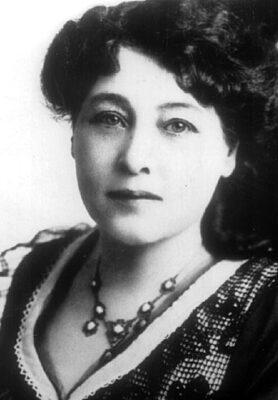
Alice Guy-Blaché, First woman director and film company owner (commons.wikimedia.org/wiki/ File:Alice_Guy.jpg)
Women and Adversity:Alice Guy-Blaché
First Woman Film Director
First Woman to own a Film Company
The film industry emerged more than a century ago, but few people know that French-born Alice Guy-Blaché influenced its development. She was the first woman to direct films and the first woman to own a film studio she named Solax Film Company.
She married Herbert Blaché, who started his own film company, Blaché Features, Inc., and used his wife’s studio and actors. He suggested their companies merge with his name first. Her name was eventually dropped, so she never received the accolades or honors she deserved.
The studio was so successful, the couple opened a facility in Fort Lee, New Jersey, at that time the hub of filmmaking. Hollywood, though, became dominant and Herbert moved there. The couple divorced, and Alice moved back to France. In 1964, she moved back to New Jersey.
Bio:
Born July 1, 1873 in Saint-Mandé, Val-de-Marne, France
1894 – secretary to Leon Gaumont, the owner of Gaumont Company in Neuilly-sur-Seine, France, the first and oldest film company in the world.
1896 – directed her first film
1907 – married Herbert Blaché, a British director, screenwriter and producer, who also worked for Gaumont.
1908 – daughter Simone born
1912 – son Reginald born
1919 – Guy-Blaché directed her last film
1921 – Solax Film Company in bankruptcy
1922 – the couple divorce
Career:
1896 – When Alice became secretary to Léon Gaumont, films were silent, only a few minutes long and consisted of scenes, such as a speeding train, landscape or seascape. Guy suggested to Gaumont that she write a narrative film and have actors take the roles. Gaumont accepted the idea, and Guy directed her first film, La Fée aux Choux, translated as The Cabbage Fairy or The Birth of Children. She then became head of production at Gaumont Film Company and remained in that position until 1906.
1907 – Gaumont chose Herbert to start a Gaumont Chronophone franchise in Cleveland, Ohio. This device coordinated sound with film. Within a year, the franchise failed, and Herbert was named manager of Gaumont’s Flushing, New York, company that distributed films.
1910 – The Flushing business floundered. Guy-Blaché opened her film studio, Solax Company. She directed and produced hundreds of films, primarily melodramas and comedies. She also included “unmentionable” topics such as equality in marriage, women as business leaders and cross-dressing. Actors and actresses became famous through her films.
1968 – Guy- Blaché died on March 24 at the age of 94.
More Information:
www.aliceguyblache.com
www.afi.com/news/alice-guy-blache-afi...
My ebooks available at amazon.com and barnesandnoble.com:
Honoring 23 Black Women, Recognizing 23 Notable Mothers, Saluting 23 Faithful Suffragists
The post Women and Adversity: Alice Guy-Blaché First Woman Film Director appeared first on Jo Ann Mathews.
May 8, 2024
Women and Adversity: Margaret E. Knight, ‘Woman Edison’ Inventor of Machines

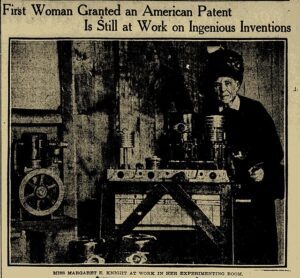
Margaret E. Knight, Inventor (Boston Sunday Post, March 31, 1912, p. 4)
Women and Adversity:Margaret E. Knight
‘Woman Edison’
Inventor of Machines
Margaret “Mattie” Eloise Knight is quoted as saying, “I’m only sorry I couldn’t have had as good a chance as a boy.”
Knight wasn’t like the average girl who played with dolls and wanted to be a wife and mother. Her world revolved around tools and machines. She was born in 1838 and at age 12, invented a safety device that prevented the shuttle from falling off a loom. She couldn’t patent her invention because she was too young to get a patent.
Flat-bottom bags are part of our shopping experience and most of us, I’m sure, have never questioned how they were invented. Look back to Knight, who wanted to find a way to make bags easier to fold. In 1867, while working at The Columbia Paper Bag Company in Springfield, Massachusetts, she saw the machine had problems, so she invented a machine that cut, glued and folded a bag so its bottom was flat.
There’s more to the story. She made a wooden model and asked machine shop worker Charles Annan to make an iron model of her design. He stole her design and had it patented. She filed a lawsuit against him and got the patent in 1871. She and a partner then established the Eastern Paper Bag Company, acquired two more patents that made the production more efficient and then mass-produced paper bags. The machine is displayed in the Smithsonian National Museum of American History.
Among her other inventions:
1883 – dress and skirt shield
1884 – clasp for robes
1885 – barbeque spit for cooking meats
1890 – shoe cutting machines
1894 – window frame and sash
Bio:
Born February 14, 1838, in York, MaineWhen her father died, the family moved to Manchester, New Hampshire1850 – Left school and began working1867 – Moved to Springfield, Massachusetts and worked at Columbia Paper Bag Company1880s-1890s – focused on inventing household items2006 – Inducted into the National Inventors Hall of FameKnight never married. She died on October 12, 1914 at the age of 76.
More information:
www.youtube.com/watch?v=M3-lgR2EHUc
biographies.framinghamhistory.org/margaret-e-knight
www.encyclopedia.com/science/encyclopedias-almanacs-transcripts-and-maps/margaret-e-knight
My ebooks available at amazon.com and barnesandnoble.com:
Honoring 23 Black Women, Recognizing 23 Notable Mothers, Saluting 23 Faithful Suffragists
The post Women and Adversity: Margaret E. Knight, ‘Woman Edison’ Inventor of Machines appeared first on Jo Ann Mathews.
April 24, 2024
Women and Adversity: Marion Donovan Inventor of Disposable Diapers
 Marion Donovan
Marion Donovan
Marion O’Brien Donovan (Papers, Archives Center, National Museum of American History © Smithsonian Institution)
Inventor of Disposable DiapersMarion Donovan is known for inventing the disposable diaper, but Victor Mills took her idea and founded Pampers.
Since her mother died when Marion was seven, she grew up spending lots of time in the factory her father and uncle owned. The twin brothers were inventors and are best known for the South Bend lathe, which was used for grinding automobile gears and gun barrels. Although Marion was fascinated with what they did, she attended Rosemont College near Philadelphia and majored in English literature. Upon graduation she took a job as assistant beauty editor at Vogue magazine in New York. She married John Donovan, a leather importer, in 1942, resigned her position and started a family.
The couple moved to Westport, Connecticut, and when Marion had her first child, she was frustrated having wet diapers saturate sheets, blankets and clothing. She worked to solve the problem by cutting up a shower curtain and designing a reusable, leakproof diaper cover that didn’t leave a rash like rubber pants did. She replaced the pins with snaps and called her design the “Boater” because it looked like a boat.
Manufacturers said it wasn’t needed, so Marion manufactured it herself. She debuted her creation at Saks Fifth Avenue in 1949. She then worked with different kinds of paper, but again, no manufacturers were interested. It wasn’t until 1961 that Mills created Pampers.
Donovan patented 20 inventions over her lifetime including:
30-garment compact hangera soap dish that drained into the sinkan elastic cord that connected over the should to the zipper of a dressthe Dentaloop, a floss circle that could seesaw between teeth.BIO:
Born in 1917 in Fort Wayne, Indiana
1939 – earned a bachelor’s degree from Rosemont College near Philadelphia
1942 – married James Donovan, a leather importer
1958 – earned a degree in architecture from Yale University, New Haven, Connecticut
2015 – inducted into the National Inventors Hall of Fame
Career:
1946 – designed a waterproof diaper cover
1949 – The “boater” debuted at Saks Fifth Avenue
1951 – received a patent for the “boater”; sold the rights to Keko Corporation, which manufactured children’s clothing
1951 – worked on creating a disposable paper diaper
1961 – Victor Mills took Donovan’s idea and created Pampers
1980 – designed her own home
Donovan died in 1998 at the age of 81.
More information:
www.youtube.com/watch?v=i7vQO_lcBBM
https://americacomesalive.com/marion-obrien-donovan-1917-1998-inventor-of-the-disposable-diaper
www.smithsonianmag.com/innovation/meet-marion-donovan-mother-who-invented-precursor-disposable-diaper-180972118
dirtydiaperlaundry.com/marion-donovan...
My ebooks available at amazon.com and barnesandnoble.com:
Honoring 23 Black Women, Recognizing 23 Notable Mothers, Saluting 23 Faithful Suffragists
The post Women and Adversity: Marion Donovan Inventor of Disposable Diapers appeared first on Jo Ann Mathews.
April 10, 2024
Women and Adversity: Margaret Keane Artist: Creator of “Big Eyes” paintings


Once Upon a Time by Margaret Keane, www.keane-eyes.com
Women and Adversity: Margaret Keane
Artist: Creator of “Big Eyes” paintings
Margaret Keane was duped! She didn’t realize her husband, Walter Keane, was taking credit for her paintings until she was with him at The Hungry i club in San Francisco where he was selling them. Even after she found out, she allowed him to continue taking credit.
This lady was shy, and Walter was abusive. He frightened her, and Margaret said he threatened her if she revealed the truth. Also, it was the era of the 1960s when women allowed their husbands, bosses and other males in their lives to take the lead in all areas.
Margaret divorced Walter in 1965, but it wasn’t until 1970 she revealed she is the artist behind the “Big Eyes” paintings. In 1986 she sued Walter and USA Today for claiming he was the artist of the paintings. She was able to paint a “Big Eyes” picture in court and won the suit; however, she never received the millions she deserved because Walter had already spent it.
When she was a child, Keane loved to draw, and she became fascinated with painting eyes bigger than normal. It is said an operation when she was two, damaged her hearing, so she concentrated on people’s eyes. She says, though, she doesn’t know why she painted the eyes big.
She was an excellent artist and her portraits, primarily of women, children and animals, became popular in the 1950s. Celebrities around the world bought her paintings. They are displayed at Keane Eyes Gallery in San Francisco, but visiting is by appointment only. Tim Burton directed the movie Big Eyes in 2014.
BIO:
Margaret “Peggy” Doris Hawkins was born in Nashville, Tennessee, September 15, 19271937 – enrolled in art classes at Watkins Institute, Nashville1945 – enrolled in Traphagen School of Fashion in New York CityAttended Jacksonville Junior College in Florida and Chaffrey Junior College in Ontario, Canada1948 – married Frank Ulbrich1949 – couple have a daughter, Jane1955 – divorced Frank1955 – married Walter Keane, a salesman, in Honolulu1965 – the couple divorced1970 – married sportswriter Dan McGuire1983 – McGuire diedKeane died of heart failure June 26, 2022 in Napa, California at the age of 94.
More information:
www.youtube.com/watch?v=OMKnuhNe3Pc
www.youtube.com/watch?v=QX9p_8uOry4
www.keane-eyes.com
My ebooks available at amazon.com and barnes and Noble:
Honoring 23 Black Women, Recognizing 23 Notable Mothers, Saluting 23 Faithful Suffragists
The post Women and Adversity: Margaret Keane Artist: Creator of “Big Eyes” paintings appeared first on Jo Ann Mathews.
March 27, 2024
Women and Adversity: Esther Lederberg Microbiologist: Pioneer in Bacterial Genetics Discovered Lambda Phage virus


Esther Lederberg, Microbiologist (https://commons.wikimedia.org/wiki/Ca... Esther_Lederberg)
Women and Adversity: Esther LederbergMicrobiologist: Pioneer in Bacterial Genetics
Discovered Lambda Phage virus
Few people know what lambda phage virus is, but Esther Lederberg discovered it in 1951. This discovery is said to have revolutionized how to understand viruses. I have no intention of saying more about it since I don’t have a clue what it means. Readers with scientific interests can learn more on their own. I’m interested because Esther’s husband, Joshua Lederberg, George Beadle and Edward Tatum claimed the Nobel Prize in 1958 for its discovery. They literally stole the prize from her and stole her glory without giving her any credit. She also helped discover the genetic extrachromosomal element, called the sex factor, responsible for genetic mating but did get credit for it.
She lost glory again in 1959 when Joshua was given the title of chair of the new department of Genetics at Stanford. Because she was a woman, Esther was given an untenured position on the faculty in the department of microbiology and immunology.
She learned Hebrew as a young girl even though it was frowned upon for girls to learn the language. She played the recorder, a Middle Ages instrument like a flute, and had an extraordinary interest in baroque, medieval and Renaissance music. She founded a recorder orchestra in California in 1962.
She had many talents but was modest about singing her own praises, which is probably the reason she was overlooked so often. Although some reports say she fought for women’s recognition, it doesn’t seem like she spoke loudly enough.
BIO:
Esther Zimmer was born in the Bronx, New York, December 18, 1922 of an Orthodox Jewish family1938 – graduated from Evander Child High School at the age of 161942- graduated from Hunter College, City University of New York1946 – master’s degree in genetics from Stanford University, California1946 – married Joshua Lederberg1950 – Ph.D. in microbiology from University of Wisconsin, Madison1962 – founded a recorder orchestra in California1966 – Esther and Joshua divorced1993 – married Matthew Simon, an engineerCAREER:
Early 1950s – Esther and her husband, Joshua, developed the technique of replica plating.This is too complicated for me to explain. Look it up if you’re interested.
1958 – Nobel Prize in Physiology or Medicine awarded to the three men named above.1959 – the Lederbergs returned to Stanford1974 – given title of adjunct professor at Stanford1976-1986 – director of Stanford University’s Plasmid Reference Centre
Lederberg died of pneumonia and congestive heart failure November 11, 2006 in Stanford.
More information
https://www.youtube.com/watch?v=bgNgEu4EZOs
https://www.whatisbiotechnology.org/index.php/people/summary/Lederberg_Esther
https://time.com/longform/esther-lede...
My ebooks available at amazon.com and barnesandnoble.com:
Honoring 23 Black Women, Recognizing 23 Notable Mothers, Saluting 23 Faithful Suffragists
The post Women and Adversity: Esther Lederberg Microbiologist: Pioneer in Bacterial Genetics Discovered Lambda Phage virus appeared first on Jo Ann Mathews.
March 13, 2024
Women and Adversity: Amy Vine, Founder of Urban Vine and Promise Land Farm


Amy Vine, Founder, Urban Vine Botanical Center (Photo by Jo Ann Mathews)
Women and Adversity:Amy Vine, Founder
Urban Vine Botanical Center
Amy Vine of Clarkston, Michigan wanted to provide activities and employment for her son and her adopted brother and sister, all of whom have special needs. With vocational programs closing in Michigan, these young people had limited choices. Vine believes every person has talents they can develop that provide self-satisfaction and value to others, and she wanted to provide employment for this special group of adults.
She decided in 2017 to study herbal medicine and learned to make tea, soap and salve. She invited adult friends and family with special needs to her home to teach them what she learned. By 2019, the group of 10 were licensed through Michigan Department of Agriculture as a wholesale food processing company. They began making these products in a commercial kitchen and also learned food and kitchen safety.
In 2020, Vine and her mother started Promise Land Farm, a family-owned property, where they now grow 20 different herbs. They extended their reach and bought sheep and bees. All these endeavors provide jobs for special needs adults.
Vine founded Urban Vine, a female-owned LLC, which distributes all-natural products that job coaches and special needs adults make. She renamed her LLC in 2023 to Urban Vine Botanical Center when she changed the business to a nonprofit organization. Individuals learn herb farming, beekeeping and livestock care. The farm produces honey and eggs and grows 40 percent of the herbs used in their products.
Vine extended herself again when she accepted the opportunity to partner with best-selling author Wade Rouse and his partner Gary Edwards. Rouse writes under the pseudonym, Viola Shipman, his grandmother’s name. Vine and her crew design and create items, primarily made by special needs individuals, to correspond to each chapter of Rouse’s/Shipman’s novella The Last Postmistress of Noel, Michigan. Vine sends these gift boxes called SHIPMANTs—six throughout 2024—to those who have subscribed to the program. The subscriber gets a chapter of the book along with gift items. By the end of 2024, the subscriber will have the entire novella, which is only available through this program; however, the program is closed.
When asked what the biggest obstacle she faced when she decided to open Urban Vine, she says, “market testing, promoting, website development, fear of the unknown, etc. I think one of my unique obstacles was juggling a growing company while grieving the loss of my dad (in 2017), raising three sons and housing my brother, who had complicated disabilities.”
The obstacles she faces now, seven years after founding Urban Vine, she says deal with payroll exceeding income. That is why she renamed her corporation and has become a nonprofit.
Vine studied theatre at Oakland University in Rochester, Michigan and began her professional career as a designer at Bella Artistry in Clarkston. In 1995 she married Sean Vine, who supports her endeavors. He has been self-employed for 30 years. The couple has three sons.
More information
www.urban-vine.com
urbanvine6@gmail.com
248-425-5946
Facebook: www.facebook.com/urbanvine6 and
www.facebook.com/amy.vine.904
www.violashipman.com
My ebooks available at amazon.com and barnesandnoble.com:
Honoring 23 Black Women, Recognizing 23 Notable Mothers, Saluting 23 Faithful Suffragists
The post Women and Adversity: Amy Vine, Founder of Urban Vine and Promise Land Farm appeared first on Jo Ann Mathews.
February 21, 2024
Women and Adversity: Ada Harris Inventor of the Hair Straightener
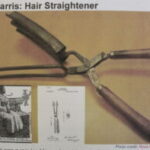

Photo by Rose Heichelbech (https://listverse.com/2021/09/17/10-i... credited-to-men)
Women and Adversity:
Ada Harris
Inventor of the Hair
Straightener
At least 30 women were deprived of glory when men either stole their ideas or were given credit for what women discovered. Since this is Black History Month, I’m featuring Ada Harris, who invented the hair straightener.
On her patent application in November 1893, she wrote that her invention straightened hair and would be of help to “colored people.” A picture of the two-part instrument looks like one side is a large cooking fork and the other part is a curling iron. Harris writes that the fork element will separate and comb the hair while the other portion will press the hair. She recommends the instrument be oiled before use. She writes, “Be it known, that I, ADA HARRIS, of Indianapolis, County of Marion, and State of Indiana, have invented a certain new and useful Hair-Straightener.” The patent was approved in 1895, but no investors came forward.
In 1909 Isaac K. Shero, altered Harris’ version by dropping the fork element that separates and combs the hair and replaced it with another iron. He has since received credit he doesn’t deserve.
Few facts are known about Harris, and several dates conflict. She is not in Wikipedia or the Encyclopedia Britannica. She has a listing in the Encyclopedia of Indianapolis, and Kelsey McKinney wrote an article about her in 2017 that appeared in Racked magazine.
BIO:
Born in Campbell, Kentucky. One report is August 15, 1866, another, 1870As a child, moved to Indianapolis, Indiana with her mother, Anna Tolliver1888 – graduated from high school and became a teacher1890 – reported to be one of the few women in Indianapolis to ride a bicycle1894 – displayed her product at the California Midwinter International Exposition1903 – became principal of Harriet Beecher Stowe School in Indianapolis1925 or 1926 – Graduated from Butler University, located in the Irvington neighborhood,with a degree in educationACTIVIST CAREER:
In 1894 Harris became an activist because she wanted African Americans to succeed. She told the Indianapolis Star in 1909, “My greatest ambition is for my race,” she said. “I want to see my people succeed. I want to see them have equal chance…I shall have spent my life for my race.”She, along with two other women, founded the Idle Hands Needle Club. This group provided fuel in winter and food and clothes for the poor.1905 – Founded a boys’ club that raised enough money to buy property where they built a gym, reading room and bathroomsRaised money to buy and run a community grocery store.Officer in the Corinthian Baptist church’s clubReporter and typesetter for two Black newspapers, the Indianapolis World and Indianapolis Freeman1894 – Established Corinthian Baptist Church’s Women’s Club1914 – The club became the Women’s Civic Club, had more than 300 members. It later merged with the Indianapolis branch of the NAACP.1917 – Held a voting registration party to register Black womenHarris died on September 15, 1927, probably from a stroke. No information is available about a husband or children.
More information
www.racked.com/2017/1/4/14014216/hair-straightener-flat-iron-inventor-ada-harris
https://indyencyclopedia.org/ada-harris
https://indystar.newspapers.com/article/the-indianapolis-news-obituary-for-ada-h/62646411
My ebooks available at amazon.com and barnesandnoble.com:
Honoring 23 Black Women, Recognizing 23 Notable Mothers, Saluting 23 Faithful Suffragists
The post Women and Adversity: Ada Harris Inventor of the Hair Straightener appeared first on Jo Ann Mathews.

